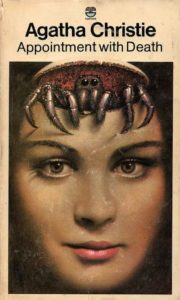In crime fiction, there is always a victim. Someone is murdered or a body is found, and the police are called in to investigate. The murder victim generally leaves behind loved ones who mourn them. They want the crime solved, and the culprit brought to justice. On the other hand, someone wanted the victim dead, so chances are they weren’t all sweetness and light.
That’s the line mystery writers walk. We generally want a victim sympathetic enough to make readers want to see justice served, but they also have to believe the victim did something bad enough to move the villain to murder. Generally. Once in a while you find a victim who lived their life in such a way that they are mourned by none. No one is calling for justice, and some are figuratively dancing on their graves. Including the readers.
That’s the kind of victim I have in A Bride’s Guide to Marriage and Murder—a man so reprehensible, those left behind want nothing more than to give the culprit a round of applause. Everyone he knew had a reason to want him dead, but which one actually did it? While writing this book, I looked for other mysteries with memorable, unlikable victims. I kept coming up with Agatha Christie’s titles. So, what follows is a list of Agatha Christie’s most unlikable victims, who had it coming.
It would be hard to come up with a single redeeming quality among these victims. They had to go. But who in each of their circles finally snapped? And how did they do it? You’ll have to read the books to find out. And I highly recommend that you do.

Simeon Lee from Hercule Poirot’s Christmas
Every member of his family has reason to hate Simeon Lee, its elderly, tyrannical multi-millionaire patriarch. His open cheating on his wife broke her spirit and turned at least one of his children against him. The others he brow-beats and controls. He unexpectedly calls them all home for Christmas. Once they’re gathered, his vicious nature surfaces, and he announces his intention to change his will. Unsurprisingly, his murder soon follows. After a collective sigh of relief, the houseguests eye each other with suspicion. One of them must be the murderer.

Aristide Leonides from Crooked House
One of my favorite Christie mysteries features another overbearing patriarch meeting a bad end. Though this is a pretty twisted family to begin with—all living under the same roof, by the way—Aristide knows how to pull their strings and push their buttons as he plays each family member against the other. He has all the control, and his adult children clearly resent him for it. When he’s murdered, even his second wife isn’t sorry to see him go—until everyone learns he gave control of his fortune to his granddaughter. Still playing one off the other right to the end.

Mr. Shaitana from Cards on the Table
Shaitaan is Hindi for devil or evil. I’m sure it was no coincidence that Christie devised the name Shaitana for this victim. He’s a wealthy collector who exudes a creepy, sinister aura. He’s flamboyant, social, and completely amoral. When he tells Poirot about his collection of murderers, he explains, “Murder can be an art. Murderers can be artists.”
Everyone is careful while around Shaitana, as if they’re defusing a bomb. Anne Meredith, a member of Shaitana’s collection, puts it best. “There’s always something a little frightening about him, I think,” she tells Poirot. “You never know what would strike him as amusing. It might—it might be something cruel.” It is definitely something cruel.

Samuel Edward Ratchett from Murder on the Orient Express
Samuel Ratchett, aka Lanfranco Cassetti, destroyed countless lives and did some awful things in his former career. Aboard the train, he recognizes Poirot and approaches him. He says he’s received death threats and asks for protection. Poirot, instinctively repulsed by the man, refuses. Ratchett, of course, is murdered. No one is bereft, and there is nothing more I can say without spoiling the book.

Mrs. Boynton from Appointment with Death
I just realized there weren’t many women in this category, but Mrs. Boynton more than makes up for any lack of quantity with pure vileness. This time Christie created a tyrannical matriarch. Her family includes a daughter and three stepchildren, one of whom refers to her as “a mad dog—something that’s doing harm in the world and must be stopped.” This mother is so loathed that several members of her family discover her body, but thinking another family member probably killed her, just walk on by, failing to report it to the authorities. That’s bad.
***


















